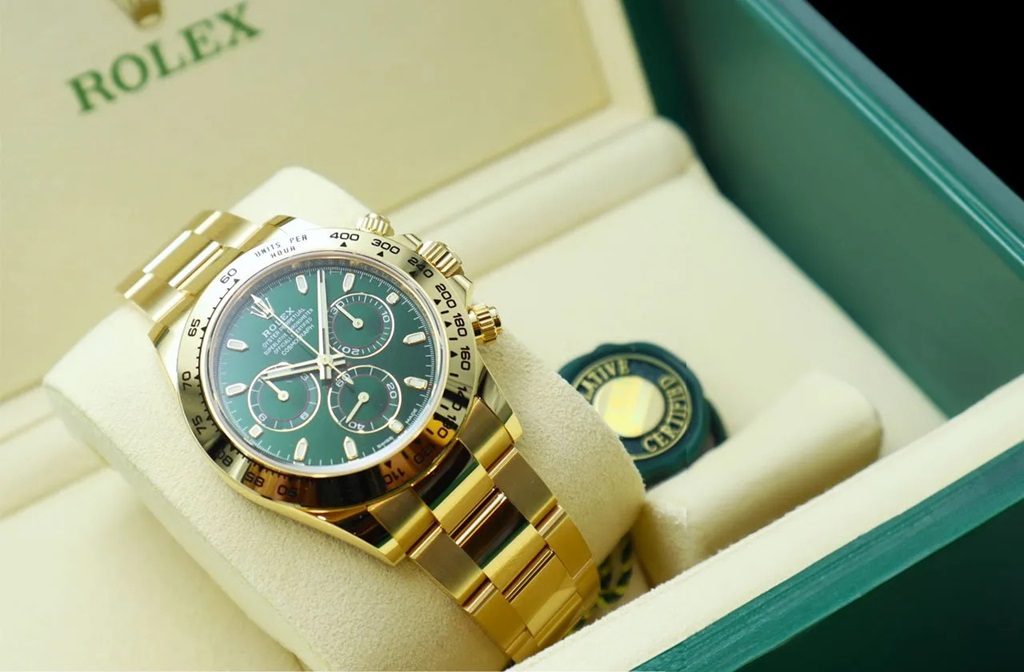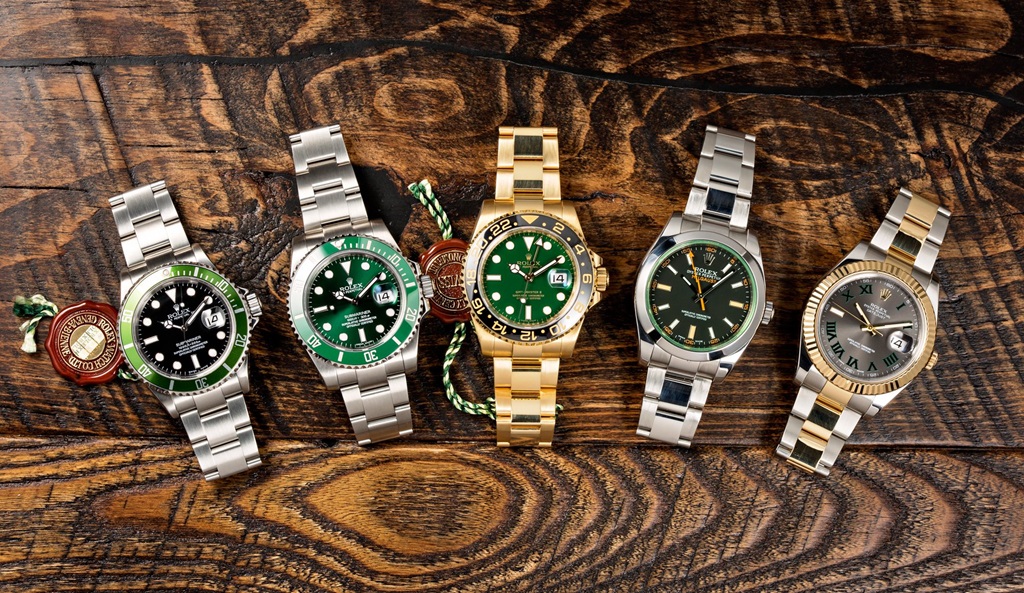Rolex watches have been quite popular among people for a long time. However, with the rise of their demand, the market has seen an influx of counterfeit watches that try to pass as authentic. This has made it extremely important to know how to tell if rolex is real. By doing so, you can ensure that you own a genuine Rolex and also determine its true value.
As an iconic luxury brand, Rolex timepieces are synonymous with prestige, status, and quality craftsmanship. With price tags starting in the thousands and going well up into the tens of thousands for solid gold models, it’s critical to ensure you’re getting the real thing if you’re investing significant money.
While sophisticated counterfeits might fool the average person, there are techniques you can use and signs to look for to properly verify the authenticity of your Rolex. Let’s explore how to tell if rolex is real.
Examine the Serial and Reference Numbers
One of the best ways to authenticate a Rolex is to examine the serial and reference numbers engraved on the watch. Rolex engraves each watch with a unique serial number deep into the metal. This allows official Rolex dealers and watchmakers to look up service records and manufacturing details.
Where can you find the serial number? On most vintage and modern Rolex watches, the serial number will be engraved between the lugs on the side of the case at the 6 o’clock position. On some larger models like the Sea-Dweller, the serial number is engraved on the inner bezel.
The serial number can usually be seen with the naked eye, but you may need a jeweler’s loupe or magnifying glass to read some smaller text. Beware of watches with poorly stamped or lightly etched serial numbers, as this can indicate a counterfeit piece. Authentic Rolex serial numbers will be deep and clearly defined.
A few exceptions:
- For early Rolex watches from the 1930s to the early 1950s, you may find the serial number inside the caseback.
- Some Lady Datejust models have serials located at the 12 o’clock end.
- Serial number placements can vary slightly on vintage watches.
In addition to the serial number, Rolex also engraves each watch with a reference number that denotes the watch’s specific model and features. This can usually be found engraved on the outside of the case at the 12 o’clock side, between the lugs at 6 o’clock, or on the inner bezel alongside the serial.
Authentic reference numbers can be cross-checked against Rolex records to match the watch model, production era, and features. Many counterfeit watches are engraved with made-up or incorrect reference numbers that misalign with the watch design.
Once you locate these numbers, you can verify them in a few ways:
- Check against Rolex production records. Rolex keeps detailed production records and can confirm if a serial-reference number pair matches up to a real watch they manufactured. Local authorized dealers can assist with this process.
- Search the online Rolex database. Bob’s Watches and other reputable Rolex vendors provide free online serial number lookups where you can instantaneously verify if a serial/reference number pair exists in Rolex’s system.
- Review the formatting. Rolex serial and reference numbers have a particular letter and number format consistent across all watches. Irregular formatting could indicate a fake.
While verifying against Rolex’s database is the best method, counterfeiters have been known to copy real serial numbers onto fake watches. So serial number checks alone don’t guarantee 100% authenticity. Read on for other vital signs to inspect.
Inspect the Watch Markings
In addition to the serial and reference numbers, genuine Rolex watches have other specific markings engraved on the metal that can help verify authenticity. Be sure to check for the following:
The Rolex Crown Logo – The iconic Rolex crown should be present on the watch face and/or engraved into the metal between the lugs at the 12 o’clock side. The Rolex name typically accompanies it. Fakes often use undersized, irregular, or otherwise inaccurate versions of the logo.
“Swiss Made” Text – All Rolex watches will have the words “Swiss Made” engraved into the lower half of the dial under the 6 o’clock position. This verifies the Swiss origins required for a real Rolex. Fakes may be missing this text or have “Swiss” spelled out in the wrong place.
Model Name – The specific model name like “Submariner”, “Sea-Dweller” or “Datejust” is usually printed below the Rolex logo on the dial. Check that it matches the watch style.
Gold Hallmarks – If your Rolex contains gold or platinum, it should bear a hallmark engraving such as “750” for 18k gold, “585” or “375” for 14k gold, or “950” for platinum. This verifies the precious metal purity. No hallmark at all is a red flag.
Case Reference Code – In addition to the reference number, Rolex casebacks are engraved with a case code like “Oyster” or “Monobloc” corresponding to the model.
Water Resistance Markings – The caseback will indicate the watch’s water resistance like “100m = 330ft”. Any watch marked as water-resistant will also say “Superlative Chronometer Officially Certified”.
Inspect all these Rolex hallmark engravings closely. Mistakes, irregular spacing, poorly defined letters, or other sloppiness can betray a counterfeit. The crisp precision engraving of a real Rolex will be obvious under magnification.
Assess Weight and Materials
Heft and feel can also indicate whether your Rolex is legit. Genuine Rolex watches have precise proportions and weight due to meticulous craftsmanship and high-quality materials. A fake can often feel lighter and flimsier.
Weight – Borrow a jeweler’s scale to weigh your watch if possible. Check that your model weighs within the normal range:
- Men’s stainless steel Rolex – 105-155 grams
- Men’s two-tone Rolex – 150-200 grams
- Men’s solid gold Rolex – 200-250 grams
- Ladies Rolex watches – 65-100 grams
Case – Rolex cases are masterfully engineered. Feel for the smoothness and density of the metal. Fakes have cheaper and lighter steel. Also, check for any scratches under magnification that could indicate refinished metal.
Band – Rolex bands have finely finished interlocking links. Inspect the fit, gaps, and range of motion. Cheap fakes have hollow end links and bands that feel flimsy.
Crystal – Rolex uses high-quality sapphire crystals that are nearly scratch-proof. Check for scratches and impacts. The Cyclops magnification lens should also precisely magnify the date.
Get to know the fine details of your model’s materials and construction. The precisely engineered feel of a real Rolex will be unmistakable.
Verify Movements and Complications
A genuine Rolex movement is an intricate masterwork of mechanical ingenuity. The functioning “engine” inside your watch can provide plenty of authentication clues.
Open the case back – First, use a case back opener tool to pop open the watch and inspect the movement. Rolex casebacks are usually smooth with no ribs, making them tricky to open. You may need a watchmaker’s help.
Check components – A real Rolex movement should have the finest quality components – blued screws, rubies for bearings, circular graining, polished pallet forks, and engraved markings. Fakes often use lower-grade generic parts.
Rotor – Rolex movements have a signed rotor that swings with wear and winds the mainspring. The rotor should have Rolex hallmarks and engravings corresponding to the reference number.
Caliber number – The movement mechanism will have a reference code like “3135” for Datejusts or “3186” for Day-Dates which you can verify fits the watch model.
“Chronometer” text – The movement should be marked “Officially Certified Chronometer” to match Rolex’s rigorous timekeeping certification standards.
Operation – Wind the crown to see that the second-hand sweeps smoothly. Turn the hands and date wheel to check they work properly with no sticking or stuttering.
Have It Inspected by a Watchmaker
For comprehensive authentication, your best bet is to take your Rolex to an experienced watchmaker or appraiser for a thorough evaluation. Here are some of the advanced techniques and tools they can use:
- Checking calibration levels with timers and demagnetizers to verify it meets Rolex’s -2/+2 second per day precision standards.
- Using a loupe to magnify subtle dial attributes like centered corona specks on tritium lume, properly formed luminova rectangles, consistent fonts, and three-dimensional markers.
- Examining the rehaut micro-engravings on the interior bezel that serves as an ID security measure.
- Evaluating the bezel teeth count and spacing. For example, Submariner bezels have 120 total teeth.
- Identifying model-specific attributes like aluminum inserts on vintage GMTs, lug holes on early sports models, drilled case sides on Oysterquartz timepieces, and more.
- Verifying the bracelet clasp code and mechanism function. The Easylink extension should have 5mm of adjustment.
While the average person may not notice tiny nuances amiss on a replica, a watchmaker has the skills and tools to spot giveaways during an in-depth professional authentication process. The peace of mind is worth consulting a horological expert.
Check Papers and Boxes
While papers and boxes can be faked too, inspecting accompanying accessories provides useful supporting evidence:
Warranty card – Match the serial number on the green warranty card to the watch. Rolex warranty cards have a foil seal and intricate visual details.
Certificate of Authenticity – Rolex includes a COSC certification that the watch has met Chronometer standards. The serial should match the watch.
Receipt of purchase – Any purchase receipt can help verify ownership history and provide another serial number data point.
Hang tag – Genuine Rolex hang tags have foil stickers applied and crisp graphics. Many knockoffs miss these subtleties.
Box – Rolex comes in a leather presentation box with a satin pillow and sleeve. Check for neat details and matching serials engraved in the wood box.
Manuals/Documents – Real Rolex booklets use high-grade matte paper stock and printing. The content directly references the watch model.
Consistent original accessories help verify a history more effectively than faked or mixed and matched boxes and papers can.
Conclusion
Determining a Rolex’s legitimacy requires a comprehensive evaluation of multiple subtle factors. From serial numbers and engraving to materials and movements, every detail is an important authentication. While advanced counterfeits might stump the untrained eye, methodically inspecting your timepiece using these techniques will confirm its real value.
The intricacies in engineering and design that Rolex prides itself on take decades of watchmaking mastery to perfect. Fakes succeed by copying style but fall short of Rolex’s flawless functionality and dependability. If you invest the time to thoroughly examine your watch, you’ll recognize the authentic quality of owning a real Rolex.
FAQs
How can I check if a Rolex is real by serial number?
You can verify the authenticity of a Rolex serial number by checking it against Rolex’s official production records. Rolex dealers can assist with this process. There are also online Rolex serial number databases that can instantaneously check if a serial number was issued by Rolex.
What are common ways to spot a fake Rolex?
Some telltale signs of a fake Rolex include:
- Irregular font, spacing, or depth of engraved markings like the serial, reference numbers, and hallmarks
- Flimsy and lightweight case materials
- Loose bracelets with gaps between links
- Poorly executed logo and text on the dial
- Lack of micro-details and imperfections in finishing
- Cheap generic movements with basic decorations and stamped metal parts
Do all Rolex watches have a serial number?
Yes, every genuine Rolex is engraved with a unique serial number on the side of the case between the lugs at 6 o’clock. Certain vintage Rolex watches from the 1930s-1950s may have serials located inside the caseback instead. The serial traces each watch’s individual history and service records.
Should a Rolex have diamonds on it?
Not all Rolex watches contain diamonds. Many standard Rolex models will have plain stainless steel, gold, or platinum cases without diamonds. Some higher-end Rolex watches are embellished with genuine diamonds on the dial, lugs, or bezel as an extra luxury touch. But diamonds are not essential for a watch to be considered a real Rolex.
What should a real Rolex case back look like?
An authentic Rolex case back will feature finely engraved text denoting the model name, water resistance rating, reference case number, and other technical markings. It should have a smooth polished finish without any ribs or tool marks. Genuine vintage Rolex casebacks often contain engraved personal messages. Solid gold Rolex cases will show a hallmark engraving indicating the gold purity content.






